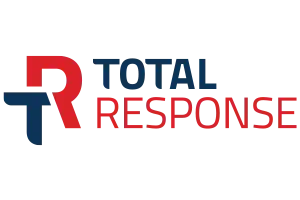
August 2, 2024
The Life-Saving Potential of 911-Initiated AED Response
In the initial moments after a cardiac arrest, seconds truly matter. Prompt deployment of an Automated External Defibrillator (AED) can be the difference between life and death. But the presence of a nearby AED may not be known to the caller or the emergency telecommunicator. Similar to providing cardiopulmonary resuscitation instruction (T-CPR), equipping telecommunicators with automated external defibrillator locations (T-AED) can improve outcomes. The PulsePoint Emergency AED Registry is accessible to telecommunicators through integrations with industry partners like PowerPhone. Telecommunicators are provided the exact location of registered AEDs within the familiar pre-arrival instruction workflow of Total Response.
While today it’s considered a best practice for emergency telecommunicators to provide CPR instructions to callers reporting unconscious/unresponsive victims, recommending nearby AEDs is the natural next step in advancing the chain of survival.

Related Webinar: PulsePoint in the PSAP: How access to AEDs elevates emergency response (Recording)
A GAME CHANGING TOOL
PulsePoint AED is a sophisticated tool that helps agencies collect and manage community AEDs, allowing these life-saving devices to be placed in motion faster and more often through the Emergency AED Registry. PulsePoint is a public, non-profit 501(c)(3) organization. The Emergency AED Registry represents a cornerstone of its mission to help public safety agencies improve cardiac arrest survival rates—and is available to your communications center free of charge.
The American Heart Association recommends that the location of all AEDs in a community be known to local emergency dispatch centers through the development of AED registries. They suggest that AED location and device information be current and accessible to emergency dispatchers and available to AED-locating systems such as mobile apps. In communities also equipped with PulsePoint Respond, the Emergency AED Registry can immediately alert AED owners and community program volunteers to nearby cardiac arrest events via AED-Needed Alerts.
A GROWING NEED FOR AED ACCESS
While AED registries have traditionally been used to meet regulatory requirements, the growing use of purpose-built, time-of-need emergency AED registries offer meaningful new opportunities to increase lifesaving AED deployment. In The Villages® (Sumter County, FL), residents use PulsePoint AED-needed alerts for immediate awareness of neighbors needing defibrillators. The program allows residents to subscribe to specific AEDs and receive “needed nearby” notifications when a suspected cardiac arrest is reported to 911. According to Stephen Kennedy, Assistant County Administrator for Sumter County, “the system decentralizes program management by moving more capabilities to those directly responsible for individual AEDs. Notifying responders using this method has streamlined our process and allowed our community-based residential AED initiative to scale much faster.” AED-needed alerts work with registered AEDs of any make or model.
ACCESS TO AEDS SAVE LIVES
Communities have been placing AEDs in public places for more than 30 years, but according to the CARES 2023 Annual Report, only 11.7% of patients who experienced cardiac arrest in public received assistance from a bystander with an AED. This gap highlights the need for innovation and the application of new capabilities to enhance our public AED network. Emergency AED registries that inform and empower dispatch center staff, as well as alert individuals with an AED nearby, offer new hope for improved outcomes and novel approaches to investigate.
Source: PowerPhone
Filed Under: News, Highlights | Tagged With: Automated External Defibrillator, Automated External Defibrillator Registry, AED, Emergency Telecommunicators, T-CPR, T-AED, Emergency AED Registry, PowerPhone, Total Response, Pre-arrival Instructions, EMD, EMD AED, EMD AED Registry, Emergency Medical Dispatch, PulsePoint AED, PulsePoint AED Registry, community AEDs, cardiac arrest, Sudden Cardiac Arrest, Sudden Cardiac Arrest AED, emergency dispatch center, PSAP, PSAP AED Registry, AED-Needed Alerts, AED registries, The Villages, Sumter County, neighbors needing defibrillators, Stephen Kennedy, 911 AED, 911 AED Registry, residential AED initiative, CARES, public AED network